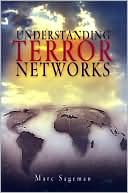Category Books
- Fiction Books & Literature
- Graphic Novels
- Horror
- Mystery & Crime
- Poetry
- Romance Books
- Science Fiction & Fantasy
- Thrillers
- Westerns
- Ages 0-2
- Ages 3-5
- Ages 6-8
- Ages 9-12
- Teens
- Children's Books
- African Americans
- Antiques & Collectibles
- Art, Architecture & Photography
- Bibles & Bible Studies
- Biography
- Business Books
- Christianity
- Computer Books & Technology Books
- Cookbooks, Food & Wine
- Crafts & Hobbies Books
- Education & Teaching
- Engineering
- Entertainment
- Foreign Languages
- Game Books
- Gay & Lesbian
- Health Books, Diet & Fitness Books
- History
- Home & Garden
- Humor Books
- Judaism & Judaica
- Law
- Medical Books
- New Age & Spirituality
- Nonfiction
- Parenting & Family
- Pets
- Philosophy
- Political Books & Current Events Books
- Psychology & Psychotherapy
- Reference
- Religion Books
- Science & Nature
- Self Improvement
- Sex & Relationships
- Social Sciences
- Sports & Adventure
- Study Guides & Test Prep
- Travel
- True Crime
- Weddings
- Women's Studies
Understanding Terror Networks » (1st Edition)

Authors: Marc Sageman
ISBN-13: 9780812238082, ISBN-10: 0812238087
Format: Hardcover
Publisher: University of Pennsylvania Press
Date Published: April 2004
Edition: 1st Edition
Author Biography: Marc Sageman
Marc Sageman, M.D., Ph.D., is a former foreign service officer who was based in Islamabad from 1987 to 1989, where he worked closely with Afghanistan's mujahedin. He has advised various branches of the U.S. government in the war on terror and is a forensic psychiatrist in private practice in Washington, D.C. His second book, Leaderless Jihad: Terror Networks in the Twenty-First Century, is also available from the University of Pennsylvania Press.
Book Synopsis
"In the late '80s, Sageman worked closely with Islamic fundamentalists during the Afghan-Soviet war and gained an intimate understanding of the development, form, and function of their networks. Sagemen wrote this book in order to dispel incorrect assertions about terrorist networks made by so-called experts."—Publishers Weekly
Publishers Weekly
Sageman, a University of Pennsylvania professor of psychiatry and ethnopolitical conflict, applies his varied experience and skills to build an empirical argument for the socio-psychological reasons why someone would join an organization such as al-Qaeda. As an officer in the Foreign Service in the late '80s, Sageman worked closely with Islamic fundamentalists during the Afghan-Soviet war and gained an intimate understanding of the development, form and function of their networks. Sageman wrote this book in order to dispel incorrect assertions about terrorist networks made by so-called experts. Using public documents, Sageman tells us that the motivation to join a militant organization does not necessarily stem from extreme poverty or extreme religious devotion but mostly from the need to escape a sense of alienation. He also disproves conventional wisdom that terrorist groups employ a "top-down" approach to recruiting, showing instead that many cells evolve from friendships and kinships and that the seeds of sedition grow as certain members of a cell influence the thinking of the others. Unfortunately, Sageman's academic and dry prose will lose readers who would be interested in his insightful argument. The growing field of counterterrorism includes many more readers than just academics, and a book like this one could have easily covered a greater portion of this market if more care had been taken to enhance the writing. (May 19) Copyright 2004 Reed Business Information.
Table of Contents
| Preface | ||
| 1 | The origins of the jihad | 1 |
| 2 | The evolution of the jihad | 25 |
| 3 | The mujahedin | 61 |
| 4 | Joining the jihad | 99 |
| 5 | Social networks and the jihad | 137 |
| Conclusion | 175 | |
| App | Names of terrorists | 185 |
| Glossary of foreign terms | 191 | |
| Bibliography | 193 | |
| Index | 213 | |
| Acknowledgments | 219 |
Subjects
 Islam
Islam  Doctrine, Islamic
Doctrine, IslamicChristianity
 All Religion
All Religion  Islam
IslamPolitical Books & Current Events Books
 Terrorism
Terrorism  Terrorism - General & Miscellaneous
Terrorism - General & MiscellaneousPolitical Books & Current Events Books
 All Politics
All Politics  Terrorism
TerrorismReligion Books
 Islam
Islam  Doctrine, Islamic
Doctrine, IslamicChristianity
 Christianity
Christianity  Islam
IslamChristianity
 Christianity
Christianity  All Religion
All ReligionNonfiction
 Politics & Current Affairs
Politics & Current Affairs  Terrorism
TerrorismNonfiction
 Politics & Current Affairs
Politics & Current Affairs  All Politics
All PoliticsNonfiction
 Religion
Religion  Islam
IslamNonfiction
 Religion
Religion  All Religion
All ReligionReligion Books
 Christianity
Christianity  Islam
IslamReligion Books
 Christianity
Christianity  All Religion
All Religion
